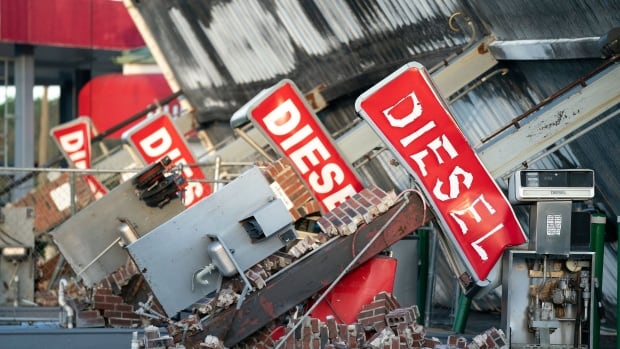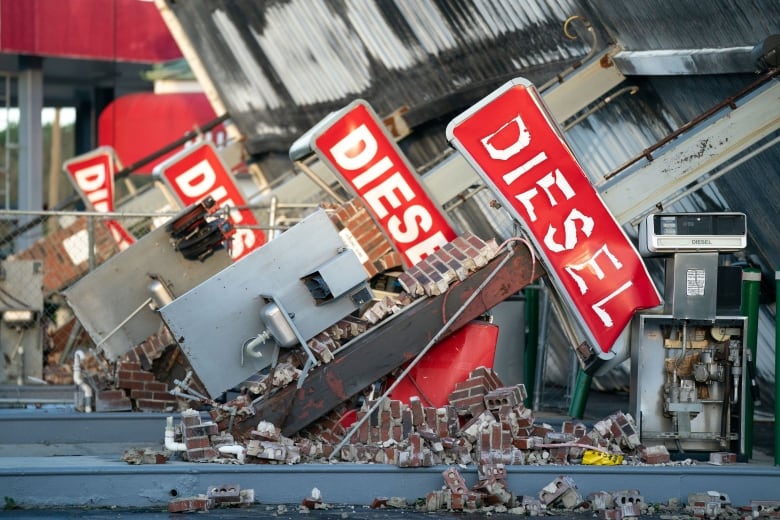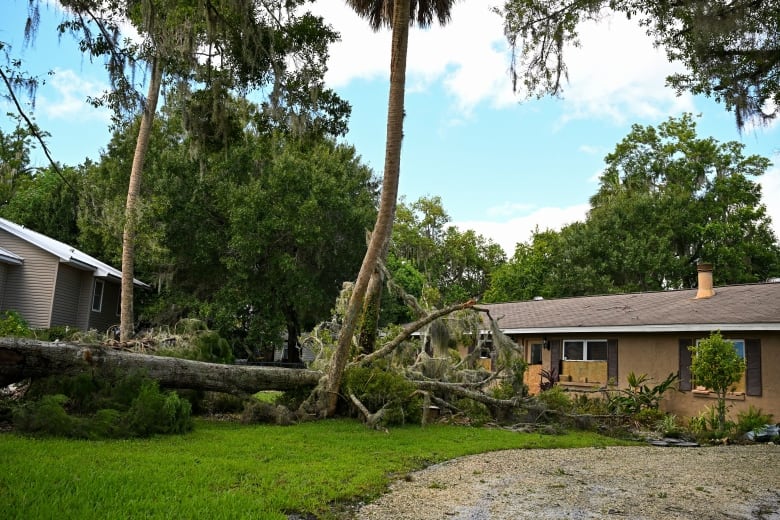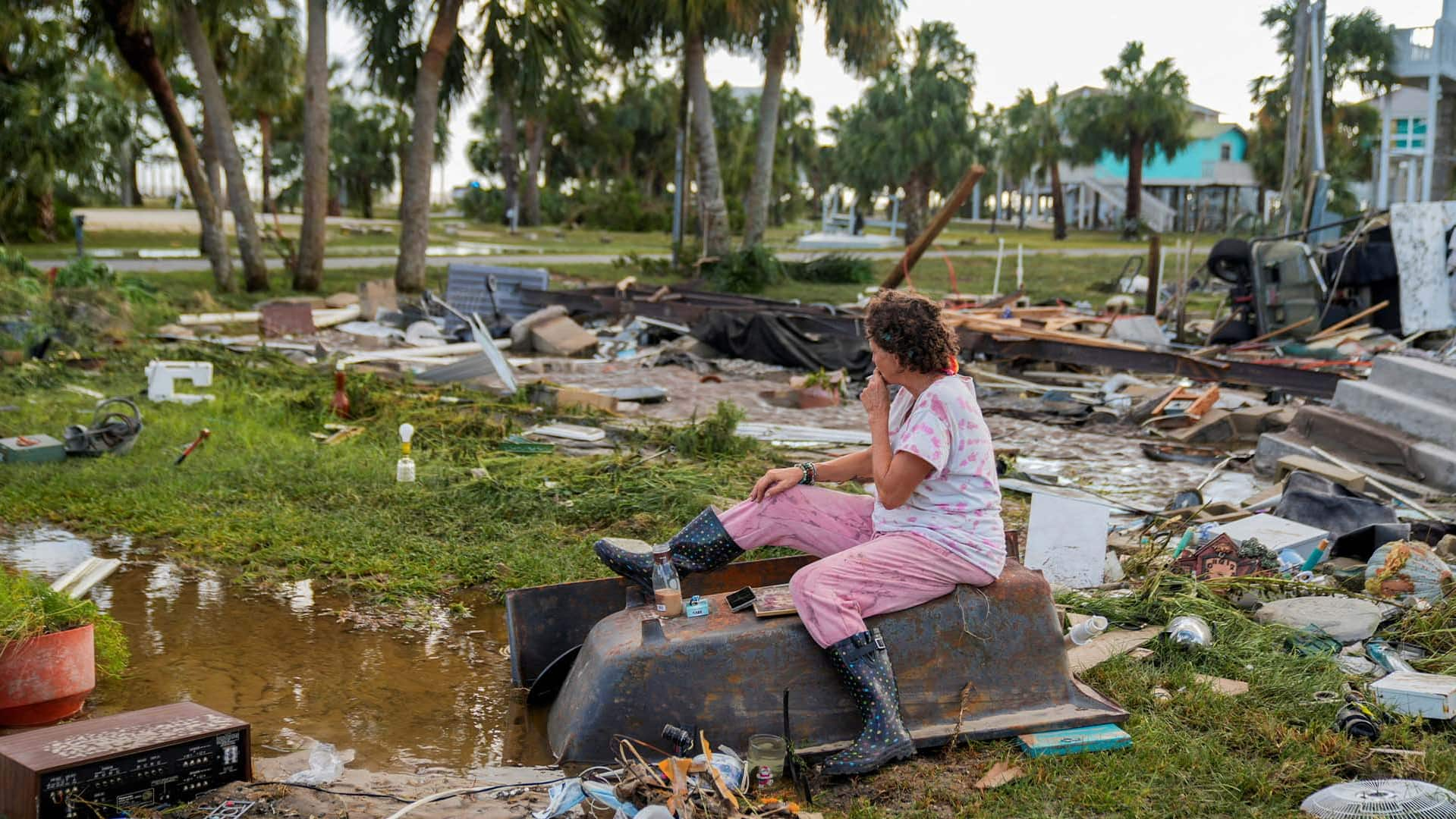
Americans along the path of Idalia’s destruction have returned to pick through piles of rubble that used to be homes as the remnants of the once-Category 4 hurricane move into the Atlantic toward Bermuda.
James Nobles went back to the tiny town of Horseshoe Beach in Florida’s Big Bend to find his home had survived the battering winds and rain but many of his neighbours weren’t as fortunate.
“The town, I mean, it’s devastated,” Nobles said. “It’s probably 50 or 60 homes here, totally destroyed. I’m a lucky one.”
The storm ranked as the most powerful hurricane in more than a century to strike the Big Bend region, a sparsely populated area laced with marshland, rivers and springs where the state’s northern Gulf Coast panhandle curves into the western side of the Florida Peninsula.
Tropical Storm Idalia has passed into the Atlantic Ocean after causing billions of dollars in damage across four states. Now, residents are getting their first look at the destruction it has left behind.
Residents, most of whom evacuated inland during the storm, helped each other clear debris or collect belongings — high school trophies, photos, records, china. They frequently stopped to hug amid tears. Six-foot-high (1.8-metre-high) watermarks stained walls still standing, marking the extent of the storm surge.
Florida Gov. Ron DeSantis toured the area with his wife, Casey, and federal emergency officials.
“I’ve seen a lot of really heartbreaking damage,” he said, noting a church that had been swamped by more than 1.2 metres of water.

Tammy Bryan, a member of the severely damaged First Baptist Church, said Horseshoe Beach residents consider themselves a family, one largely anchored by the church.
“It’s a breath of fresh air here,” Bryan said. “It’s beautiful sunsets, beautiful sunrises. We have all of old Florida right here. And today we feel like it’s been taken away.”
Tens of thousands still without power
The storm first made landfall Wednesday in Florida, where it razed homes and downed power poles. It then swung northeast, slamming Georgia, flooding many of South Carolina’s beaches and sending seawater into the streets of downtown Charleston. In North Carolina it poured more than 23 centimetres of rain on Whiteville, which flooded downtown buildings.
One Georgia resident was killed when a tree fell on him as he tried to clear another tree from a road.

Florida officials said there was one hurricane-related death in the Gainesville area, but didn’t release any details.
Thousands of utility line workers rushed to restore power in Florida but nearly 95,000 customers were still without electricity Friday morning.
But unlike previous storms, Idalia didn’t wreak havoc on major urban centres in Florida. It provided only glancing blows to Tampa Bay and other more populated areas, DeSantis noted. In contrast, Hurricane Ian last year hit the heavily populated Fort Myers area, and overall left 149 dead in the state.
U.S. President Joe Biden spoke to DeSantis and promised whatever federal aid is available. Biden also announced that he will go to Florida on Saturday to see the damage himself.
The Current19:46Why warming oceans are making hurricanes worse
Hurricane Idalia slammed into Florida this week, leaving chaos in its wake. Guest host Susan Bonner hears why warming oceans are making hurricane season more destructive — and how communities in their path can adapt.
The president used a news conference at the Federal Emergency Management Agency’s headquarters to send a message to Congress, especially those lawmakers who are balking at his request for $12 billion US in emergency funding to respond to natural disasters.
“We need this disaster relief request met and we need it in September” after Congress returns from recess, said Biden, who had pizza delivered to FEMA employees who have been working around the clock on Idalia and the devastating wildfires on Maui, Hawaii.
Bermuda potentially in storm’s path
Hurricanes are nothing new in his Georgia neighbourhood, but Desmond Roberson said he was shocked as he toured what was left of his Georgia neighbourhood.
Roberson took a drive through Valdosta on Thursday with a friend to check out damage after the storm ripped through the town of 55,000.
On one street, he said, a tree had fallen on nearly every house. Roads remained blocked by tree trunks and downed power lines, and traffic lights were still blacked out at major intersections.
“It’s a maze,” Roberson said. “I had to turn around three times, just because roads were blocked off.”
The storm had 145 kilometre winds when it made a direct hit on Valdosta on Wednesday, Georgia Gov. Brian Kemp said.
“We’re fortunate this storm was a narrow one, and it was fast moving and didn’t sit on us,” Kemp told a news conference Thursday in Atlanta. “But if you were in the path, it was devastating. And we’re responding that way.”
Idalia, still packing winds of nearly 100 kilometres per hour on Friday, has the potential to bring heavy rainfall and potential flash flooding to Bermuda on Saturday, according to the U.S. National Hurricane Center.
